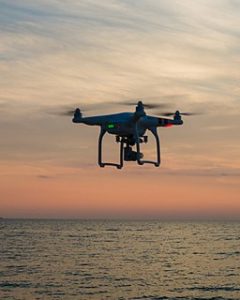Security risks of intelligent technologies spell a need for greater collaboration
New connected and intelligent devices are quickly becoming ubiquitous in American life. Digital Assistants — such as Alexa or Siri — have penetrated 12% of U.S. broadband households and are projected to be in 55% of households by 2022. The ride hailing company Uber has ordered 24,000 Volvo XC90 cars for up to $1.4 billion to head the development of their driverless car fleet. The U.S. Federal Aviation Administration (FAA) expects that the commercial drone fleet will increase from 1.1 million units to between 2.75 and 4.5 million units by 2021.
The appeal of these new connected and intelligent technologies are the efficiencies and cost savings they promise to consumers and firms. However, they also pose serious risks to human security as people become more reliant on technologies that can be hacked or controlled by third parties or adversaries.

In a testimony to a panel of Senators on September 29, FBI Director Christopher Wray highlighted the idea that commercial drones pose an imminent threat to homeland security, pointing out that cheap drones could be used to bypass traditional security checkpoints and drop bombs, chemicals, or toxic materials. Scientists have also expressed concern about autonomous drones that can attack targets efficiently and carry payloads similar in size to explosive belts worn by suicide bombers. Further, innovations in autonomous technology could allow drones to bypass traditional countermeasures such as radars, signal jamming, or GPS interruptions because they would be low-flying, small aircraft that don’t require external directions.
The development of autonomous cars are also creating significant vulnerabilities. Two security researchers, Charlie Miller and Chris Valasek, demonstrated the risks posed by the software that already exists in contemporary cars by hacking a Toyota Prius, a Ford Escape, and a Jeep Cherokee and disabling brakes, turning the steering wheel, and increasing acceleration. They highlighted the fact that these risks could be mitigated by a driver in the front seat who can react and take control of the steering or acceleration.
However, the ability to regain control might be lost in the future as self-driving AI cars allow individuals to be located away from the controls — or if self-driving cars lack controls altogether.
Miller and Valasek also point out that every rider in a driverless taxi is a security threat who could access the car’s controls using ports that are ubiquitous, as entry points for hacking. This risk is especially significant in light of the increasing use of vehicle ramming as a tool of terrorist groups, including seven different attacks across the U.S. and Europe in 2017. Other security challenges exist due to the need for cross-firm collaboration. For example, firms at different stages of the supply chain may need to increase coordination to make sure there aren’t gaping holes in software security, otherwise companies like Uber or Lyft may be left working with software they aren’t familiar with, creating the potential for security vulnerabilities.
The security challenges that intelligent and connected technologies present are systematic and require new ways of encouraging collaboration between firms, and between the public and private sector. A failure to sufficiently address these challenges would leave society vulnerable to terrorists, hackers, and other criminal actors.
Further Sources and Reading:
- Uber to buy 24,000 Volvo cars for driverless fleet – Financial Times
- The security threat we’ve been ignoring: Terrorist drones – Washington Post
- Terrorists Are Using Drones Now. And That’s Not the Worst of It – Fortune
- Juniper Research: Amazon Echo & Google Home to Reside in Over 50% of US Households by 2022, as Multi-assistant Devices Take Off – Business Wire
- FAA Aerospace Forecast Fiscal Years 2017-2037 – Federal Aviation Administration
- Securing Driverless Cars From Hackers Is Hard. Ask the Ex-Uber Guy Who Protects Them – Wired
- Terrorist Attacks by Vehicle Fast Facts – CNN
- Adoption of voice assistants such as Amazon Echo and Google Home more than doubles from 2015 to 2016 – Park and Associates
- The security threat we’ve been ignoring: Terrorist drones – The Washington Post
